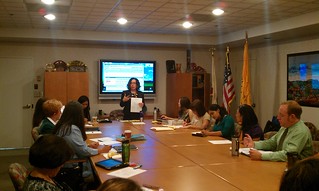Coalitions and Collaboration - Creating Passionate Change
 In every county of Southern California, Pauline and I are witnessing a groundswell of support for Safe Routes to School. One of the key signs of this increasing interest is the creation of countywide coalitions formed around Safe Routes to School, healthy eating and active living.
In every county of Southern California, Pauline and I are witnessing a groundswell of support for Safe Routes to School. One of the key signs of this increasing interest is the creation of countywide coalitions formed around Safe Routes to School, healthy eating and active living.



 Change is inevitable, it is said. It is how we choose to adapt to this change that is central in the New York Times bestseller “Who Moved My Cheese?” that eloquently describes our instinctual response to change through a parable about two mice and two mini-people whose cheese supply has been moved.
Change is inevitable, it is said. It is how we choose to adapt to this change that is central in the New York Times bestseller “Who Moved My Cheese?” that eloquently describes our instinctual response to change through a parable about two mice and two mini-people whose cheese supply has been moved. The first Ohio network meeting was held on Tuesday, June 19 at the Ohio Department of Transportation (ODOT) Central Office, to kick off the Safe Routes Partnership’s efforts in Ohio.
The first Ohio network meeting was held on Tuesday, June 19 at the Ohio Department of Transportation (ODOT) Central Office, to kick off the Safe Routes Partnership’s efforts in Ohio. In my first
In my first 